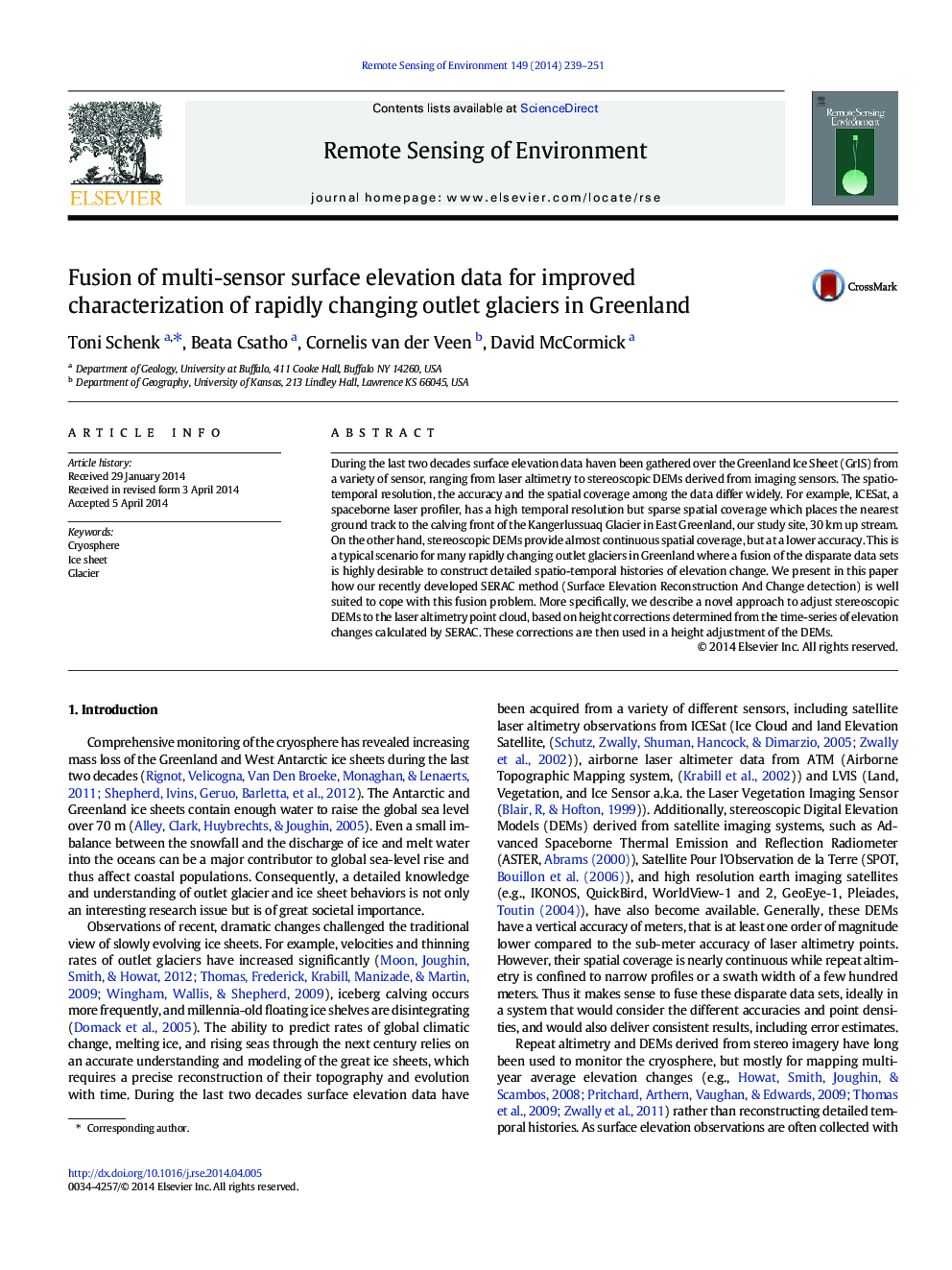| Article ID | Journal | Published Year | Pages | File Type |
|---|---|---|---|---|
| 6346780 | Remote Sensing of Environment | 2014 | 13 Pages |
Abstract
During the last two decades surface elevation data haven been gathered over the Greenland Ice Sheet (GrIS) from a variety of sensor, ranging from laser altimetry to stereoscopic DEMs derived from imaging sensors. The spatio-temporal resolution, the accuracy and the spatial coverage among the data differ widely. For example, ICESat, a spaceborne laser profiler, has a high temporal resolution but sparse spatial coverage which places the nearest ground track to the calving front of the Kangerlussuaq Glacier in East Greenland, our study site, 30Â km up stream. On the other hand, stereoscopic DEMs provide almost continuous spatial coverage, but at a lower accuracy. This is a typical scenario for many rapidly changing outlet glaciers in Greenland where a fusion of the disparate data sets is highly desirable to construct detailed spatio-temporal histories of elevation change. We present in this paper how our recently developed SERAC method (Surface Elevation Reconstruction And Change detection) is well suited to cope with this fusion problem. More specifically, we describe a novel approach to adjust stereoscopic DEMs to the laser altimetry point cloud, based on height corrections determined from the time-series of elevation changes calculated by SERAC. These corrections are then used in a height adjustment of the DEMs.
Keywords
Related Topics
Physical Sciences and Engineering
Earth and Planetary Sciences
Computers in Earth Sciences
Authors
Toni Schenk, Beata Csatho, Cornelis van der Veen, David McCormick,
